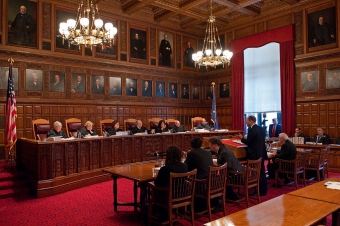Summary:
The students had a written exercise that simulates a question that was that already taken to the Court of Ethics and Discipline of OAB, which involved law firm advertising.
Objective:
The goal is that students develop the ability to identify in any concrete case an ethical misconduct or situations that could be appointed by the OAB Court of Ethics and Discipline, as misconduct not only from the establishment of rules, but also at most from decisions that have been made by the Court. The activity also conducts to legal research capacity.
Dynamics:
- TEACHING METHODS: simulation and Problem-Based Learning.
- REQUIREMENTS: the students were already familiar with the literature about the legal professions and the regulation of the legal profession in Brazil. During the course it was requested previous reading of literature selected by the professor (attachment).
- INTRODUCTION TO THE DYNAMICS: the professor showed to the students the picture of an ad for a law firm announced in a Facebook social network page (attachment).
- DEVELOPMENT OF THE DYNAMICS: from this announcement, two groups produced a complaint each, other two groups produced a defense each, and other two groups were selected to decide each one with a pair of complaints and defense about the attitude that the law firm violating or not dictates ethical-professionals. Since the goal was to identify any office misconduct, the defense was made within the same period that the representation without the defenders knew the terms of the complaint. Therefore, there was an asymmetry of the information among the groups. Although, at this point, the activity differed from the contradictory context of what happens in reality, this option made sense to the exercise so that the group could notice other points than those identified in the complaint, exploring their full potential. In addition, after a week these pieces were delivered by e-mail to groups that made up the Court of Ethics, whose members also counted on one week to present a decision. The professor joined the complaint and defense parts, which were structurally closer, in order to make more consistent decisions. The exercise was done entirely in a written format and they were delivered by email in the class’ group. Everyone could be aware of the parts of all other groups after the delivered.
- ATTENTION IN THE CLASSROOM: if the professor already knows well the class at the time of the activity, it is interesting to put students in groups that have to defend opposing arguments to their real opinion. This usually yields a more robust and well-structured argument.
Evaluation:
- FEEDBACK: the feedback was given in a written format by the professor to each group via e-mail.
- GRADE EVALUATION: the activity composed, along with other evaluations, the part of the grade referring to "engagement on the proposed activities" which corresponded to 50% of the course grade.
Observation:
1) For this activity to occur it is needed to have at least three groups.
2) Also, the exercise is important for students to realize that not all information is available and that there are limitations on the dissemination of information for legal research.
3) Another version of this activity could be done with a presential classroom simulation judgment session of the OAB Court of Ethics and Discipline, with the contradictory between reporting and advocacy groups, and judgment held at the time of the simulation.







